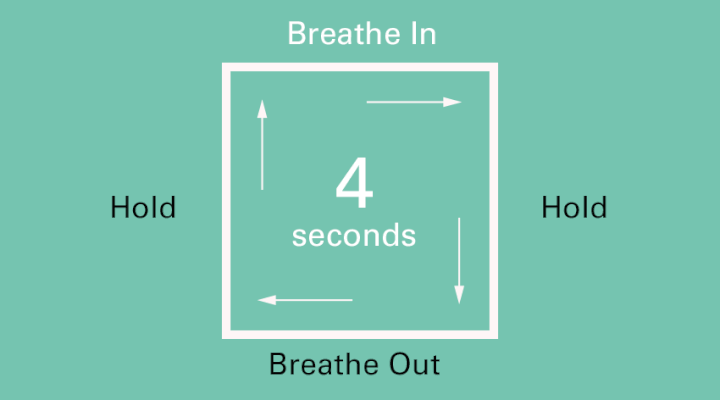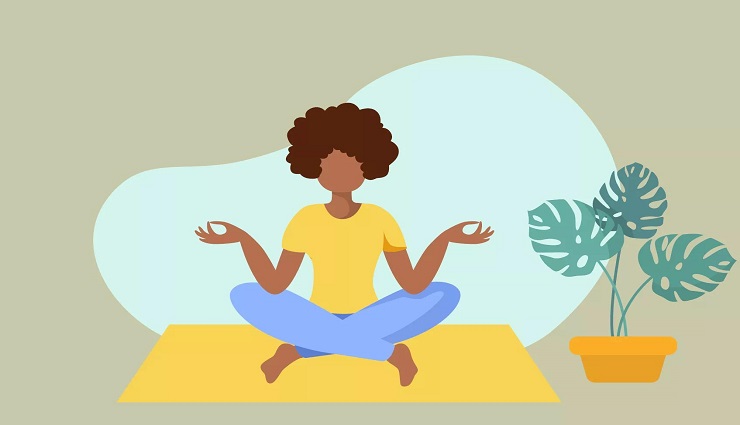Have you ever tried to take a deep and long breath after a busy and stressful day to restore your nerves? You must know its significant relaxing effect if you have experienced deep breathing during stress and anxiety attacks. Box breathing is one of the deep breathing techniques that has attracted attention recently, and much research has been done about it. Boxed breathing is a four-step method for increasing relaxation and reducing stress that involves taking several slow, deep breaths. You may be interested that this simple breathing exercise is used to reduce stress, treat anxiety, depression, and even control pain. If you like the box breathing method and its benefits for mental health, know more, follow us in this article.
What is box breathing?
Box breathing, also called “diaphragmatic breathing” or “abdominal breathing,” is a type of deep breathing exercise that makes people more relaxed. This exercise is called “box” breathing because one can do this four-step breathing technique more quickly by thinking of a box or square image. Therefore, this method is also called “square breathing,” “four square breathing,” or “4×4 breathing”.
With mental imagery, you can use the box breathing method almost anywhere, and you don’t necessarily need to be in a quiet environment to enjoy the benefits of this method.
US Navy personnel use this breathing method to maintain calm and reduce tension in stressful situations.
Benefits of box breathing
When you experience anxiety or stress, your body prepares to face the supposed danger; Heart rate and blood pressure increase, muscles contract, breathing becomes shallow and shallow, and some people may feel short of breath. In such a situation, it is possible that rapid and shallow breathing has a negative effect and increases the feeling of anxiety.
This is where box breathing comes into play and curbs stress. The deeper the breathing, the slower the heart rate and the less muscle contraction. This way, you can lower or keep your blood pressure stable.
In 2023, a study was conducted at the US National Institutes of Health; According to this research, 5-minute breathing exercises during the day (including box breathing) reduce anxiety and improve mood. This research showed that the practice of box breathing, along with meditation and mindfulness, plays a significant role in improving people’s physiological reactions and spirit.
Also, according to other research, box breathing has such benefits:
- reducing negative emotions ;
- improve attention and cognitive performance;
- lowering blood pressure ;
- Improvement of depression symptoms.
How to practice box breathing
Box breathing has four simple steps. To do box breathing more quickly, look at a square object like a box or close your eyes and imagine a box. On each breath, look at one side of the box. Start at the top corner of the box and move around the TV to return to your starting point.
Follow the following steps in order:
- Look at the top of the box and breathe slowly through your nose. Count to 4
- Hold your breath for a count of 4 as you lower down one side of the box.
- At this point, follow the bottom of the box with your eyes. Again, count to 4, and slowly exhale all the air in your lungs during this time.
- Move up again from the other side of the box and count to 4. In the meantime, hold your breath.

If 4 seconds is too long or too short for you, you can set the time of each step according to your ability. For example, instead of 4 seconds, you can breathe or hold your breath for 2 or 3 seconds. Repeat this exercise 3 or 4 times.
Other deep breathing techniques
Several other effective deep breathing techniques can reduce stress, anxiety, or negative emotions. Next, we introduce two other deep breathing methods you can use while sitting, lying down, or even standing.
1. Conscious breathing
Mindful breathing is a simple exercise that directs your attention and concentration to breathing. This practice is like mindfulness meditation; In mindfulness meditation, you only have to observe your thoughts and not try to change them. In mindful breathing, you pay attention to it without changing your breathing.
You can do mindful breathing in 3 steps:
- Count to 3 and take a deep breath in through your nostrils.
- Hold your breath and count to 2.
- Count to 4 and exhale completely through your mouth.
Repeat this exercise for 5 to 7 minutes.
If you notice that your thoughts and mind are busy during this time, write down your wandering reviews and slowly focus on breathing. You are focusing on the rise and fall of your chest while breathing will also make you calmer and more mindful.
2. Breathing 4-7-8
Dr. Andrew Weil developed the 4-7-8 breathing technique to become one of the most popular methods of mindful breathing. This technique is based on pranayama breathing exercises in yoga. To practice this method, follow the five steps below:
- Place the tip of your tongue on the roof of your mouth, behind the top row of front teeth.
- Part your lips and exhale entirely out of your mouth to hear it. You will probably hear a “woosh” or “hoo.”
- Close your lips and breathe silently through your nose for 4 seconds.
- Hold your breath for 7 seconds.
- Count to 8 and exhale again with a “hoo” sound.
Try to do this exercise 3 more times.
last word
Box breathing is a simple technique to increase the relaxation of the mind and body in times of stress. According to research, box breathing helps reduce symptoms of anxiety and depression and improves people’s cognitive performance and attention.
In addition to box breathing, there are other breathing techniques that you can practice almost anywhere and get the same benefits. You can try the 4-7-8 breathing and mindful breathing techniques and see which works best. If you have done any of these breathing exercises and got results from them, share your experiences with us in the comments section of this article.



